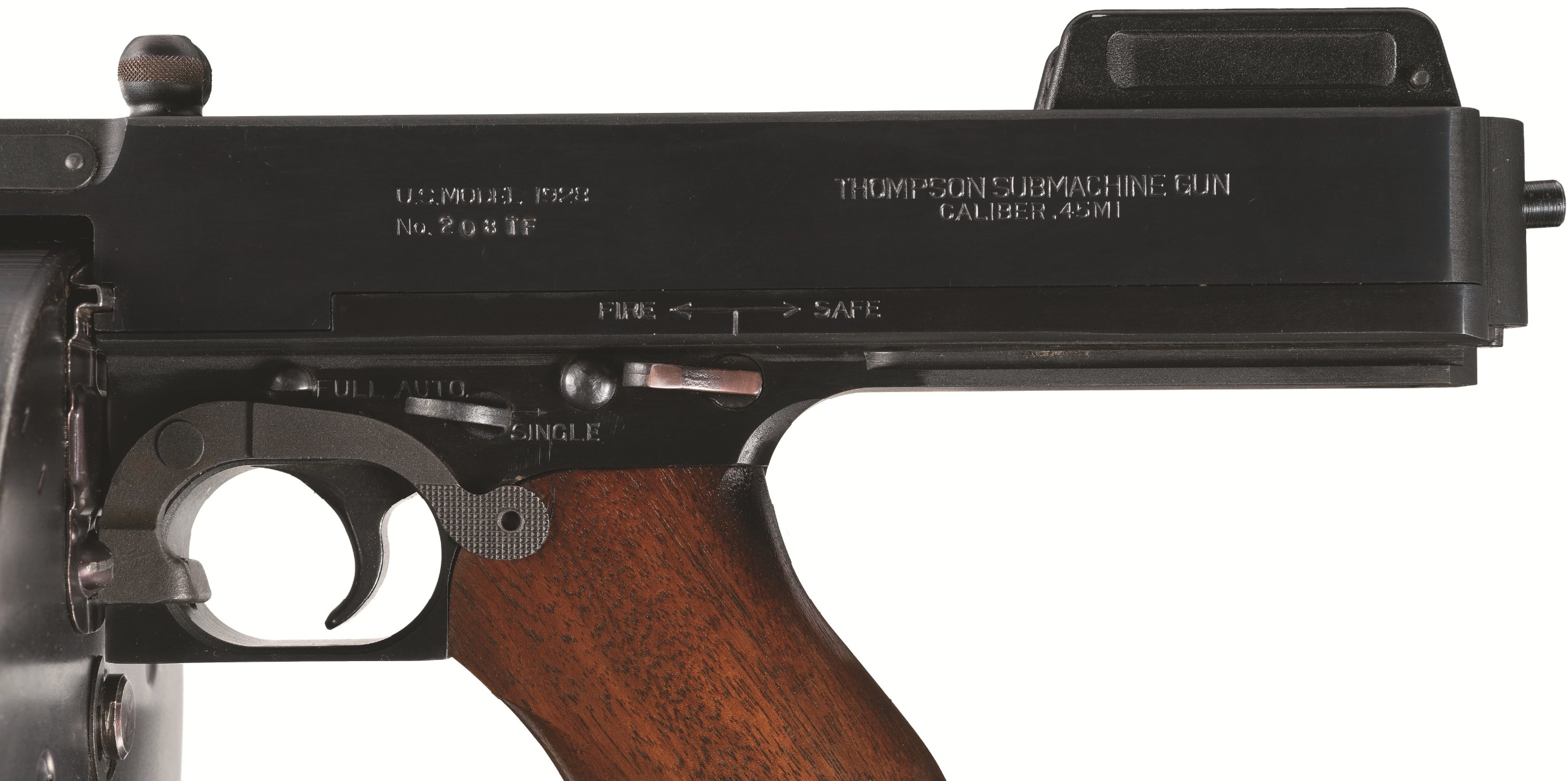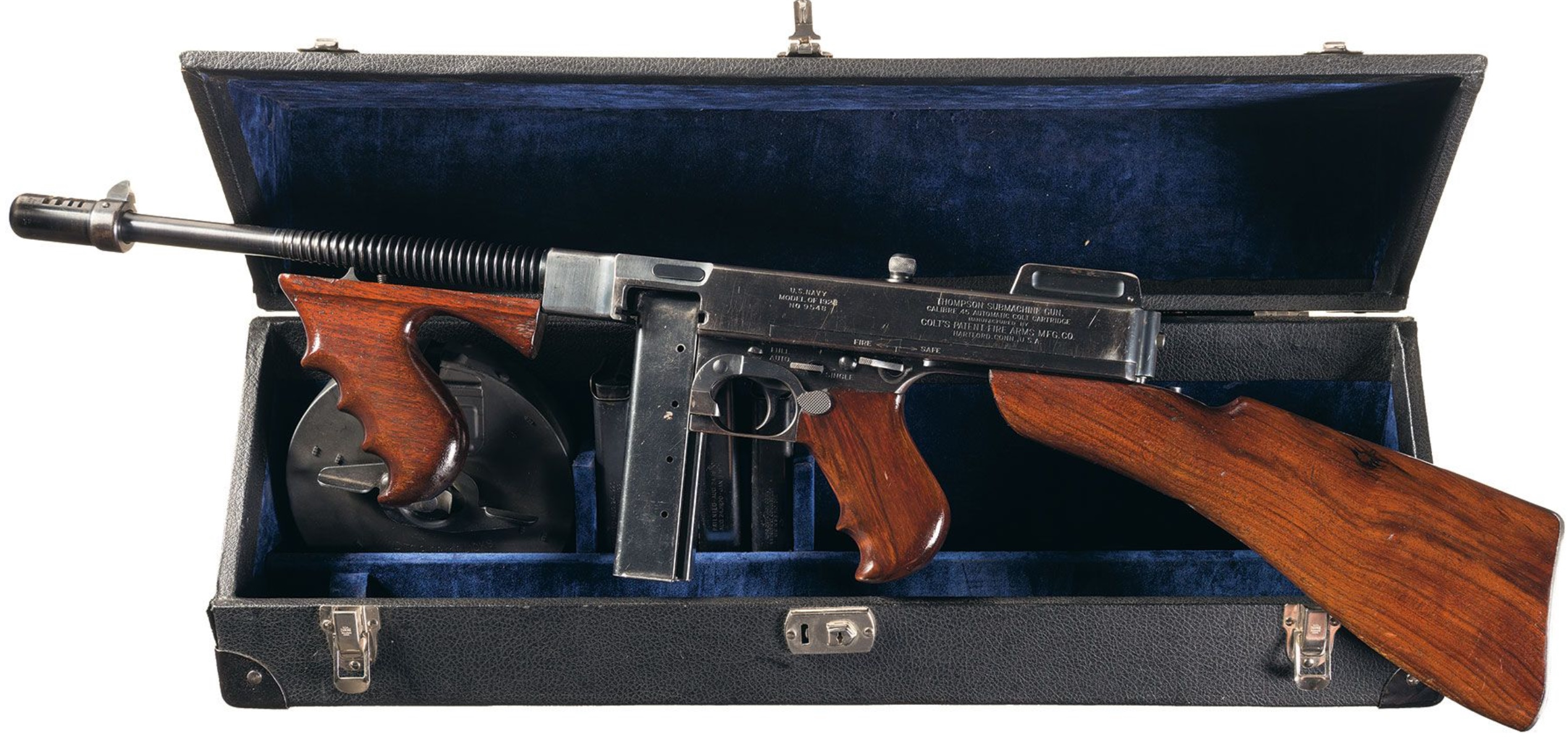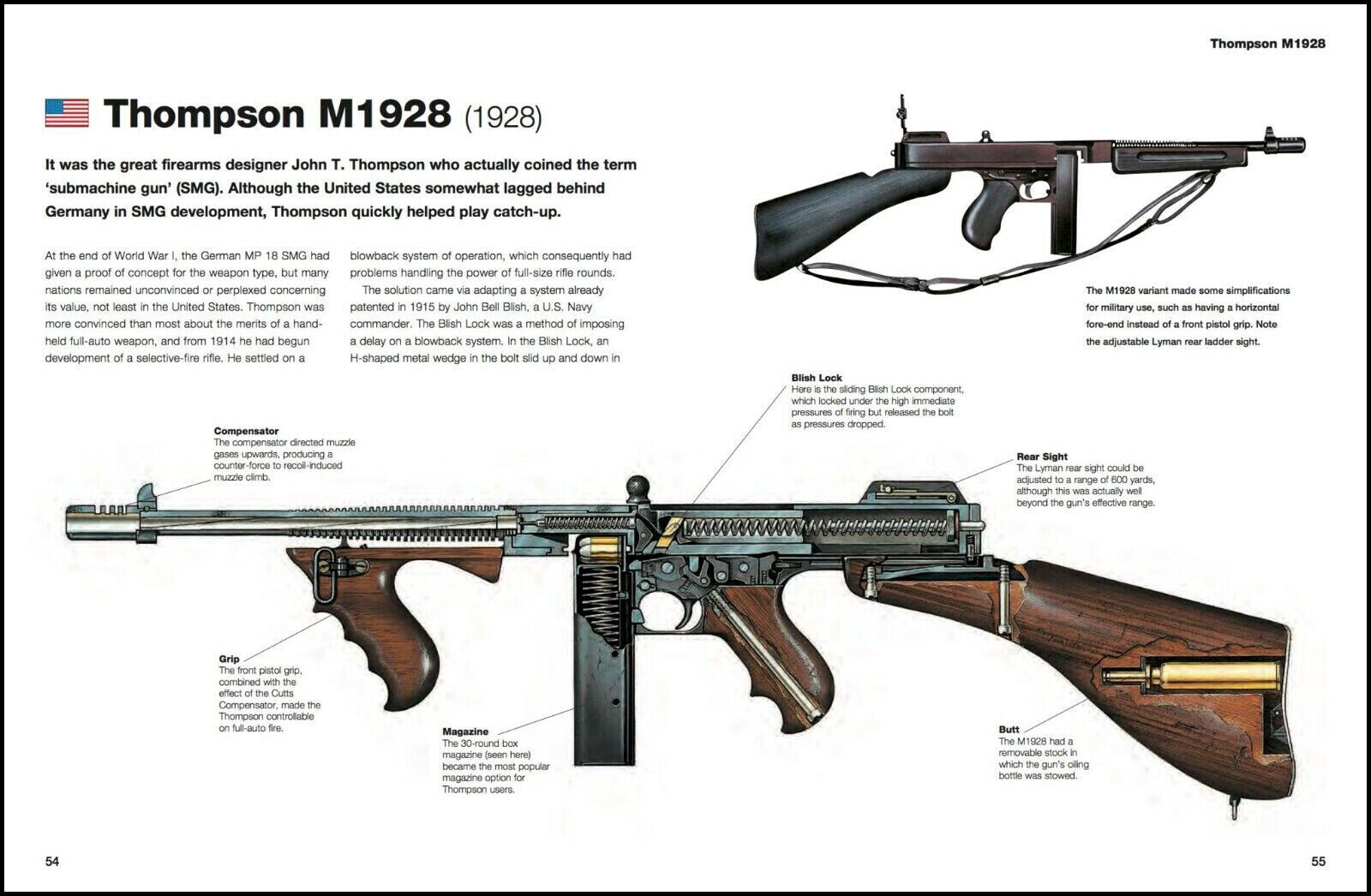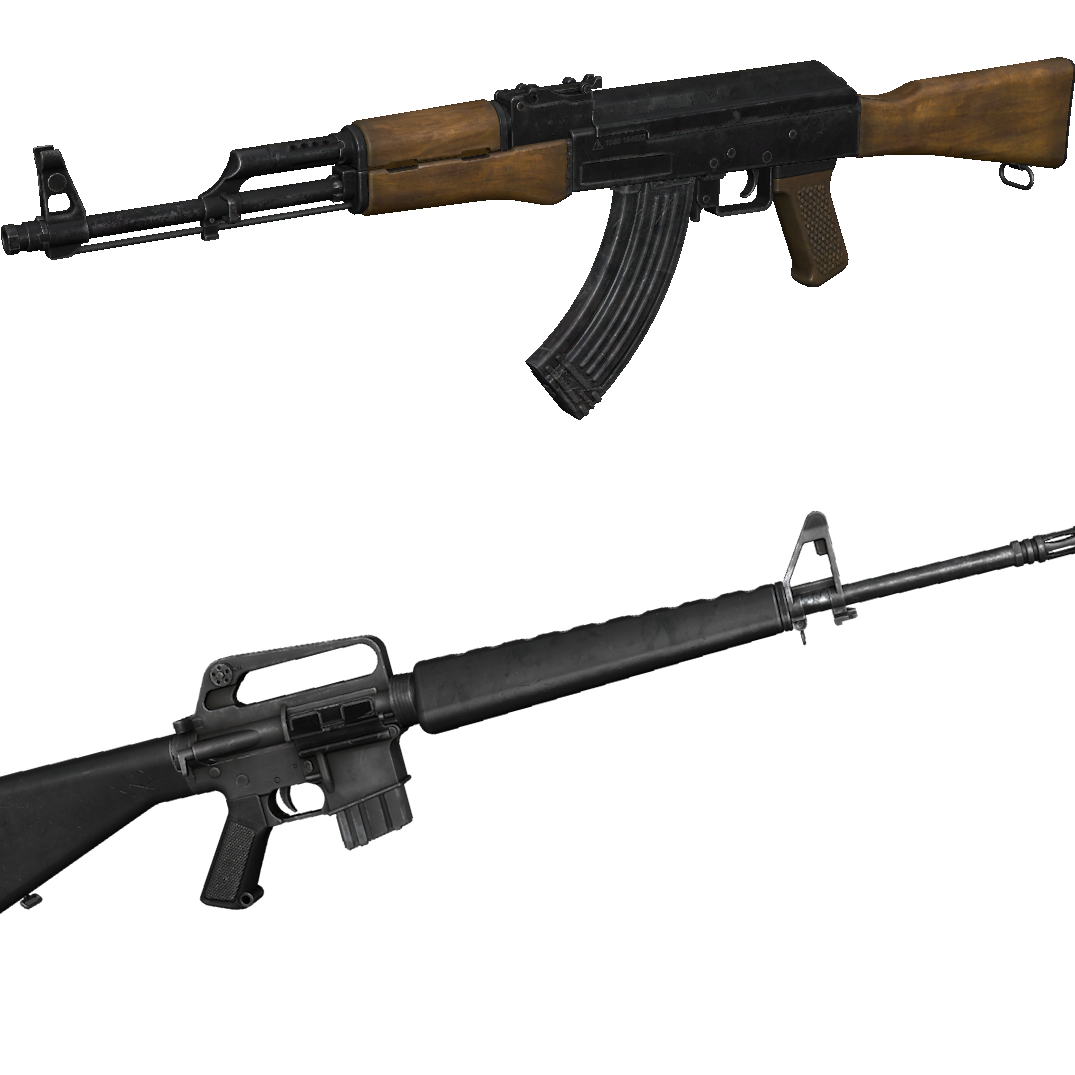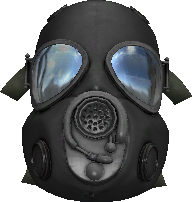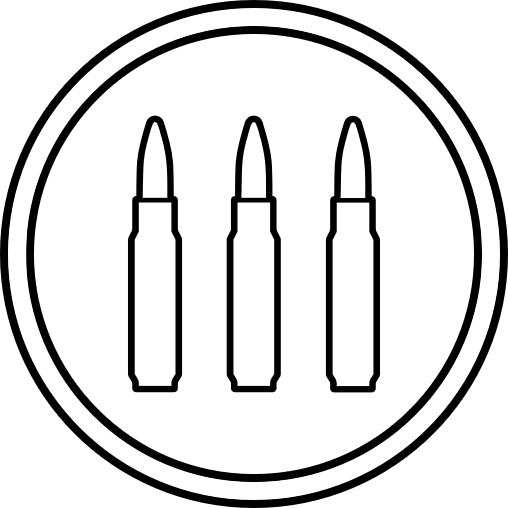M1928 Thompson: Difference between revisions
Skizmophonic (talk | contribs) No edit summary |
Skizmophonic (talk | contribs) No edit summary |
||
| (9 intermediate revisions by the same user not shown) | |||
| Line 1: | Line 1: | ||
[[Category:Weapons]] | |||
[[Category:Weapons of Vietnam]] | |||
{| class="wikitable sortable" style="margin:auto;text-align: center;width:90%" | {| class="wikitable sortable" style="margin:auto;text-align: center;width:90%" | ||
|- | |- | ||
| Line 18: | Line 20: | ||
! rowspan=2 | Leg × | ! rowspan=2 | Leg × | ||
! rowspan=2 | Arm × | ! rowspan=2 | Arm × | ||
! | ! colspan=2 | Reload Speed | ||
|- | |- | ||
|38||×2.6 = 98.8||×1.4 = 53.2||×1.3 = 46.8||×0.8 = 30.4||×0.75 = 28.5|| | ! Partial!! Empty | ||
|- | |||
|- | |||
|38||×2.6 = 98.8||×1.4 = 53.2||×1.3 = 46.8||×0.8 = 30.4||×0.75 = 28.5||2.766 Seconds||3.766 Seconds | |||
|- | |- | ||
|} | |} | ||
| Line 45: | Line 49: | ||
! rowspan=2 | [[Place of Origin]] | ! rowspan=2 | [[Place of Origin]] | ||
! rowspan=2 | [[Date]] | ! rowspan=2 | [[Date]] | ||
! rowspan=2 | [[ | ! rowspan=2 | [[Manufacturer]] | ||
! rowspan=2 | Barrel Length | ! rowspan=2 | Barrel Length | ||
! rowspan=2 | Total Length | ! rowspan=2 | Total Length | ||
| Line 56: | Line 60: | ||
<hr> | <hr> | ||
The Thompson submachine gun, also known as the "Tommy gun," was invented by U.S. Army Brigadier General John T. Thompson in 1918. Although it missed World War I combat, it saw early use by the U.S. Marine Corps, the Postal Inspection Service, the Irish Republican Army, the Republic of China, and the FBI. The weapon became notorious during Prohibition as the favored weapon of organized crime syndicates. Widely adopted by U.S. and Allied forces during World War II, the Thompson's main models were the M1928, M1, and [[M1A1]], with over 1.5 million units produced during the war. | The Thompson submachine gun, also known as the "Tommy gun," was invented by U.S. Army Brigadier General John T. Thompson in 1918. Although it missed World War I combat, it saw early use by the U.S. Marine Corps, the Postal Inspection Service, the Irish Republican Army, the Republic of [[China]], and the FBI. The weapon became notorious during Prohibition as the favored weapon of organized crime syndicates. Widely adopted by U.S. and Allied forces during World War II, the Thompson's main models were the M1928, M1, and [[M1A1]], with over 1.5 million units produced during the war. | ||
=HISTORY= | =HISTORY= | ||
Brigadier General John T. Thompson, of the U.S. Army's ordnance department, invented and developed the Thompson submachine gun to replace bolt-action rifles like the M1903 Springfield. He utilized John Bell Blish's 1915 patent for the Blish lock, leading to the foundation of the Auto-Ordnance Company in 1916 with Thomas F. Ryan's financial backing. | Brigadier General John T. Thompson, of the U.S. Army's ordnance department, invented and developed the Thompson submachine gun to replace bolt-action rifles like the [[M1903 Springfield]]. He utilized John Bell Blish's 1915 patent for the Blish lock, leading to the foundation of the Auto-Ordnance Company in 1916 with Thomas F. Ryan's financial backing. | ||
Developed mainly in Cleveland, Ohio, by designers Theodore H. Eickhoff, Oscar V. Payne, and George E. Goll, the Thompson submachine gun used a friction-delayed blowback action and was chambered in .45 ACP. Initially named the "Annihilator I," it was rebranded in 1919 as the "Thompson Submachine Gun" after World War I ended before prototypes could be deployed. | Developed mainly in Cleveland, Ohio, by designers Theodore H. Eickhoff, Oscar V. Payne, and George E. Goll, the Thompson submachine gun used a friction-delayed blowback action and was chambered in .45 ACP. Initially named the "Annihilator I," it was rebranded in 1919 as the "Thompson Submachine Gun" after World War I ended before prototypes could be deployed. | ||
| Line 66: | Line 70: | ||
The Model 1928 was the last small arm adopted by the U.S. Army with a year designation in its name. World War II contracts from several countries saved the manufacturer from bankruptcy. Savage produced a notable variant with an aluminum receiver and tenite grip, buttstock, and forend. | The Model 1928 was the last small arm adopted by the U.S. Army with a year designation in its name. World War II contracts from several countries saved the manufacturer from bankruptcy. Savage produced a notable variant with an aluminum receiver and tenite grip, buttstock, and forend. | ||
The M1928A1 variant entered mass production before Pearl Harbor, replacing the vertical foregrip with a horizontal forend and adding a military sling provision. Despite Lend-Lease shipments and U.S. military needs, only two factories produced M1928A1s early in WWII. It could use 50-round drum magazines and 20- or 30-round box magazines, but the latter were preferred due to reliability and practicality. A total of 562,511 were made. Wartime variants featured a fixed rear sight without sight guard wings and a non-ribbed barrel, similar to the M1/M1A1. | The M1928A1 variant entered mass production before Pearl Harbor, replacing the vertical foregrip with a horizontal forend and adding a military sling provision. Despite Lend-Lease shipments and U.S. military needs, only two factories produced M1928A1s early in WWII. It could use 50-round drum magazines and 20- or 30-round box magazines, but the latter were preferred due to reliability and practicality. A total of 562,511 were made. Wartime variants featured a fixed rear sight without sight guard wings and a non-ribbed barrel, similar to the M1/[[M1A1]]. | ||
<br>[https://en.wikipedia.org/wiki/Thompson_submachine_gun SOURCE] | <br>[https://en.wikipedia.org/wiki/Thompson_submachine_gun SOURCE] | ||
<hr> | <hr> | ||
| Line 72: | Line 76: | ||
<gallery mode="packed" heights="400px"> | <gallery mode="packed" heights="400px"> | ||
File: | File:1 M1928 stock.jpg | ||
File:2 M1928 stock.jpg | |||
File:3 M1928 stock.jpg | |||
File:M1928 stock.jpg | |||
File:M1928 stock2.jpg|M1928A1 | |||
File:S-l16002323.jpg | |||
</gallery> | </gallery> | ||
| Line 82: | Line 91: | ||
service=youtube | service=youtube | ||
|id=https://www.youtube.com/watch?v=O4jo8csYpg0 | |id=https://www.youtube.com/watch?v=O4jo8csYpg0 | ||
|alignment=inline | |||
|description= | |||
}} | |||
{{#evt: | |||
service=youtube | |||
|id=https://www.youtube.com/watch?v=FBiIWuQNQHU | |||
|alignment=inline | |alignment=inline | ||
|description= | |description= | ||
Latest revision as of 08:00, 5 November 2024
| Factions | Weapon | Icon | Classes | Ammo |
|---|---|---|---|---|
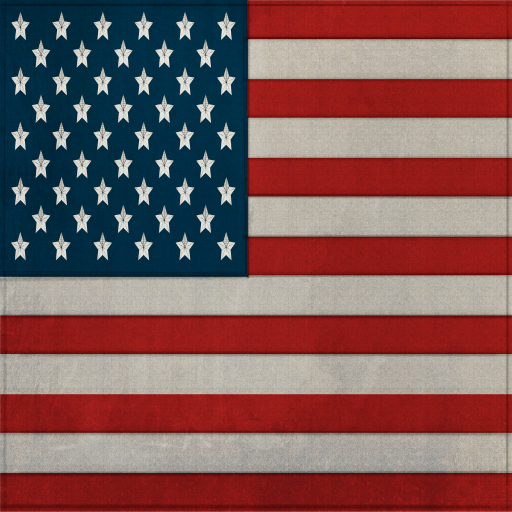 US |
 M1928 Thompson |
 |
 Assault Assault |
50 / 150 |
| Damage Base | Headshot × | Chest × | Stomach × | Leg × | Arm × | Reload Speed | |
|---|---|---|---|---|---|---|---|
| Partial | Empty | ||||||
| 38 | ×2.6 = 98.8 | ×1.4 = 53.2 | ×1.3 = 46.8 | ×0.8 = 30.4 | ×0.75 = 28.5 | 2.766 Seconds | 3.766 Seconds |
| Designation | Weapon Type | Fire Modes | Fire Rate | Bullet Spread ° | Range Modifier | Muzzle Velocity | Projectile weight | Weight |
|---|---|---|---|---|---|---|---|---|
| M1928 | SMG | Auto+Semi | 700 RPM | 7.2° & 1.95° ADS | 0.85 | 285 m/s | 14.9 g (229.94 gr) | 6.7 kg (14.8 lbs) |
| Full name | Caliber | Place of Origin | Date | Manufacturer | Barrel Length | Total Length | Weapon Script Name |
|---|---|---|---|---|---|---|---|
| Thompson M1928 | .45ACP | USA | 1928 | Auto-Ordnance Company Federal Laboratories |
12 in (300 mm) (with Cutts compensator) | 33.7 in (860 mm) | weapon_m1928 |
The Thompson submachine gun, also known as the "Tommy gun," was invented by U.S. Army Brigadier General John T. Thompson in 1918. Although it missed World War I combat, it saw early use by the U.S. Marine Corps, the Postal Inspection Service, the Irish Republican Army, the Republic of China, and the FBI. The weapon became notorious during Prohibition as the favored weapon of organized crime syndicates. Widely adopted by U.S. and Allied forces during World War II, the Thompson's main models were the M1928, M1, and M1A1, with over 1.5 million units produced during the war.
HISTORY
Brigadier General John T. Thompson, of the U.S. Army's ordnance department, invented and developed the Thompson submachine gun to replace bolt-action rifles like the M1903 Springfield. He utilized John Bell Blish's 1915 patent for the Blish lock, leading to the foundation of the Auto-Ordnance Company in 1916 with Thomas F. Ryan's financial backing.
Developed mainly in Cleveland, Ohio, by designers Theodore H. Eickhoff, Oscar V. Payne, and George E. Goll, the Thompson submachine gun used a friction-delayed blowback action and was chambered in .45 ACP. Initially named the "Annihilator I," it was rebranded in 1919 as the "Thompson Submachine Gun" after World War I ended before prototypes could be deployed.
The Model 1928, first widely used by military forces, was primarily purchased by the U.S. Navy and Marine Corps in the 1930s. Originally Model 1921s with added weight to the actuator to meet Navy requirements, these guns had the "1921" on the receiver stamped with an "8" over the last "1". Collectors refer to this model as the "Colt Overstamp," "1921 Overstamp," "28 Navy," or "28N."
The Model 1928 was the last small arm adopted by the U.S. Army with a year designation in its name. World War II contracts from several countries saved the manufacturer from bankruptcy. Savage produced a notable variant with an aluminum receiver and tenite grip, buttstock, and forend.
The M1928A1 variant entered mass production before Pearl Harbor, replacing the vertical foregrip with a horizontal forend and adding a military sling provision. Despite Lend-Lease shipments and U.S. military needs, only two factories produced M1928A1s early in WWII. It could use 50-round drum magazines and 20- or 30-round box magazines, but the latter were preferred due to reliability and practicality. A total of 562,511 were made. Wartime variants featured a fixed rear sight without sight guard wings and a non-ribbed barrel, similar to the M1/M1A1.
SOURCE


